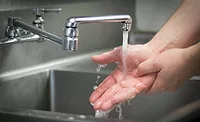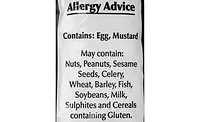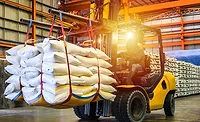Food Safety: Unwarranted consumer fears abound on TV
Current programming underscores public misconceptions and lack of knowledge about food chemicals and pesticides.

A popular talk show features an MD who seems to be a self-proclaimed expert on everything related to health. In one episode, he was ranting about food dangers. His targets were Bisphenol A and pesticides, and it was painful to watch as the host and panel misinterpreted these subjects.
This program and others underscore public misconceptions and lack of knowledge about food chemicals and pesticides, specifically that farmers are putting vast quantities of chemicals on their fields without any thought of the consequences.
This is far from the truth. Farmers are business owners and are not going to increase their costs through excessive, unnecessary pesticide use. Plus, failure to use pesticides according to their labeling is illegal, and farmers are required to maintain records of their usage.
In addition, in the push to ensure a safer food supply, food processors that buy large quantities of agricultural produce generally maintain a department to work with growers and review application records prior to purchase. And most buyers mandate their growers have products tested at least once a year to verify they meet pesticide levels.
Occasionally, however, a grower or processor loses out. At one time, I worked overseas with a processor that shipped frozen okra to the US. The company president came into our offices complaining about how his product had been embargoed by customs because it contained an illegal pesticide. We researched the pesticide and found it was a chemical approved for use on cotton. We asked him if any of his neighbors grew cotton and found one of them had contaminated his fields with a pesticide not approved for okra.
Most consumers do not understand are how pesticide limits are set and how fresh produce is tested. Pesticide limits are based on long-term animal studies, and the level is set by determining the highest amount that does not cause adverse effects. This is called the no adverse effect level (NOAEL), and it is decreased 100-fold to allow for differences in individuals and species. Therefore, toxicologists actually start with a level safe for long-term consumption, and then a safety factor is built in. In actuality, the limits are set very conservatively.
Pesticides are also applied to the surface of fruits and vegetables to kill insects, control mold growth or kill weeds. Generally these pesticides do not enter plant tissues. However, when produce is tested for pesticides, the items are tested unwashed, unpeeled and unsorted. But food processors and consumers usually wash fruits and vegetables before use and peel many of them. These actions remove most of the pesticides on the fruit. In fact, washing may be more effective at removing chemicals than eliminating microorganisms.
Another common misconception is that conventionally grown fruits and veggies contain pesticides and organically grown produce does not. The only difference is that the pesticides used on organic foods are organic in nature. This does not, however, mean they are safer or used in lesser amounts.
The final issue is concentrations. Fifty years ago, analysts were able to test samples and find chemicals in the parts-per-million level. Since then, analytical sensitivities have increased many-fold. In fact, some analysts have been able to detect compounds at both the attogram and milliatogram levels, or 10-18 and 10-21.
The food industry needs to address unwarranted consumers fear. Will any of these talk shows actually look at the science and make an effort to explain it? Probably not. Fear and innuendo sell.

Meritech; 800-932-7707; www.meritech.com

GOJO; 800-321-9647; www.gojo.com

Ecolab; 800-352-5326; www.ecolab.com
CABINET WASHER
The Sani-Matic Sani-Cab multi-purpose cabinet washer is engineered to clean a wide variety of items such as trays, pans, pots, buckets, totes, drums and utensils using a repeatable, automated process. The unit’s rotating spray bars ensure that cleaning solutions are evenly distributed inside the washer, providing complete and consistent coverage. The machine’s rack-on-a-cart design improves cleaning efficiencies by reducing handling, minimizing cross-contamination and maximizing the number of units cleaned per documented cleaning cycle.
Sani-Matic; 800-356-3300; www.sanimatic.com
HAND SANITIZER
Diversey’s Soft Care liquid, instant hand sanitizer is an alcohol-based formula that consistently shows a 99.9% or greater reduction in many common pathogenic organisms when used according to instructions. Requiring no rinsing or drying with towels, the sanitizer instantly sanitizes skin without the use of water. The product, which has NSF certification, is a colorless liquid with an alcohol scent. It has a pH of 7.5 and a shelf life of two years.
Diversey; 800-558-2332; www.diversey.com

A popular talk show features an MD who seems to be a self-proclaimed expert on everything related to health. In one episode, he was ranting about food dangers. His targets were Bisphenol A and pesticides, and it was painful to watch as the host and panel misinterpreted these subjects.
This program and others underscore public misconceptions and lack of knowledge about food chemicals and pesticides, specifically that farmers are putting vast quantities of chemicals on their fields without any thought of the consequences.
This is far from the truth. Farmers are business owners and are not going to increase their costs through excessive, unnecessary pesticide use. Plus, failure to use pesticides according to their labeling is illegal, and farmers are required to maintain records of their usage.
In addition, in the push to ensure a safer food supply, food processors that buy large quantities of agricultural produce generally maintain a department to work with growers and review application records prior to purchase. And most buyers mandate their growers have products tested at least once a year to verify they meet pesticide levels.
Occasionally, however, a grower or processor loses out. At one time, I worked overseas with a processor that shipped frozen okra to the US. The company president came into our offices complaining about how his product had been embargoed by customs because it contained an illegal pesticide. We researched the pesticide and found it was a chemical approved for use on cotton. We asked him if any of his neighbors grew cotton and found one of them had contaminated his fields with a pesticide not approved for okra.
Most consumers do not understand are how pesticide limits are set and how fresh produce is tested. Pesticide limits are based on long-term animal studies, and the level is set by determining the highest amount that does not cause adverse effects. This is called the no adverse effect level (NOAEL), and it is decreased 100-fold to allow for differences in individuals and species. Therefore, toxicologists actually start with a level safe for long-term consumption, and then a safety factor is built in. In actuality, the limits are set very conservatively.
Pesticides are also applied to the surface of fruits and vegetables to kill insects, control mold growth or kill weeds. Generally these pesticides do not enter plant tissues. However, when produce is tested for pesticides, the items are tested unwashed, unpeeled and unsorted. But food processors and consumers usually wash fruits and vegetables before use and peel many of them. These actions remove most of the pesticides on the fruit. In fact, washing may be more effective at removing chemicals than eliminating microorganisms.
Another common misconception is that conventionally grown fruits and veggies contain pesticides and organically grown produce does not. The only difference is that the pesticides used on organic foods are organic in nature. This does not, however, mean they are safer or used in lesser amounts.
The final issue is concentrations. Fifty years ago, analysts were able to test samples and find chemicals in the parts-per-million level. Since then, analytical sensitivities have increased many-fold. In fact, some analysts have been able to detect compounds at both the attogram and milliatogram levels, or 10-18 and 10-21.
The food industry needs to address unwarranted consumers fear. Will any of these talk shows actually look at the science and make an effort to explain it? Probably not. Fear and innuendo sell.

HANDWASHING SYSTEMS
Meritech’s CleanTech systems provide a no-touch, automated method of washing and sanitizing bare and gloved hands. The automated handwashing systems help to eliminate variations in employee hygiene practices, and significantly reduce the risk of spreading disease. The systems perform a fully automated 12-second handwash, sanitize and rinse cycle, removing over 99.98% of disease-causing pathogens. The green technology uses 75% less water and produces 75% less waste than manual handwashing. The system increases hand hygiene compliance up to 400% while improving skin quality.Meritech; 800-932-7707; www.meritech.com

HAND SANITIZER FOAM
Purell E3 instant hand sanitizer, formulated for the food processing industry, is available as a foam product. It works as a no-rinse adjunct to handwashing and is effective against germs and microorganisms that may cause illness. The product supports hand hygiene compliance, and meets guidelines for use in US federally regulated food processing facilities.GOJO; 800-321-9647; www.gojo.com

CLEANING SOLUTION FOR ZERO TRANS-FAT OILS
Exelerate ZTF is a cleaning program to help food manufacturers address the growing problem with cleaning zero trans-fat oil residue from processing equipment and environmental surfaces. The program can cut the cleaning time by up to one-half the length compared to existing systems. Exelerate ZTF breaks down difficult polym-erized oil soils on fryers, ovens, mixers and other plant surfaces, enabling them to be cleaned more thoroughly. The gelled product application clings to equipment and surfaces to dissolve zero trans-fat soils, making it easier to clean hard-to-reach areas, including fryer hood vents, walls, ceilings and plant catwalks.Ecolab; 800-352-5326; www.ecolab.com
CABINET WASHER
The Sani-Matic Sani-Cab multi-purpose cabinet washer is engineered to clean a wide variety of items such as trays, pans, pots, buckets, totes, drums and utensils using a repeatable, automated process. The unit’s rotating spray bars ensure that cleaning solutions are evenly distributed inside the washer, providing complete and consistent coverage. The machine’s rack-on-a-cart design improves cleaning efficiencies by reducing handling, minimizing cross-contamination and maximizing the number of units cleaned per documented cleaning cycle.
Sani-Matic; 800-356-3300; www.sanimatic.com
HAND SANITIZER
Diversey’s Soft Care liquid, instant hand sanitizer is an alcohol-based formula that consistently shows a 99.9% or greater reduction in many common pathogenic organisms when used according to instructions. Requiring no rinsing or drying with towels, the sanitizer instantly sanitizes skin without the use of water. The product, which has NSF certification, is a colorless liquid with an alcohol scent. It has a pH of 7.5 and a shelf life of two years.
Diversey; 800-558-2332; www.diversey.com
Looking for a reprint of this article?
From high-res PDFs to custom plaques, order your copy today!








